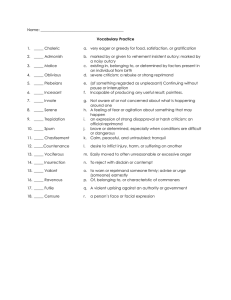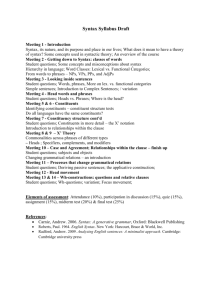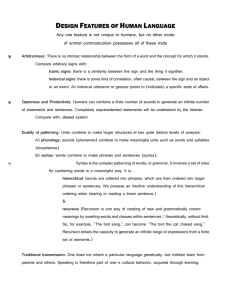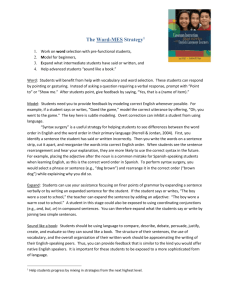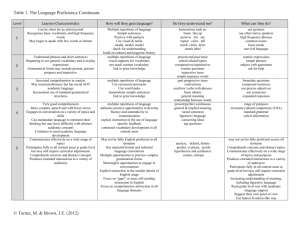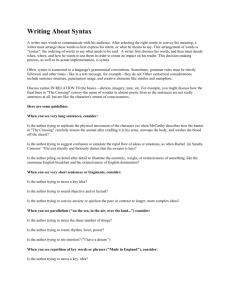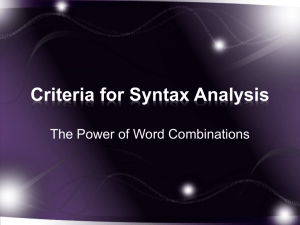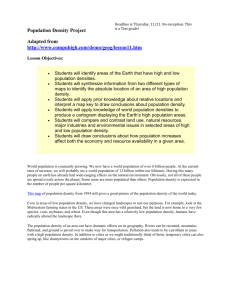Parallel Structure & "Marigolds" Analysis
advertisement
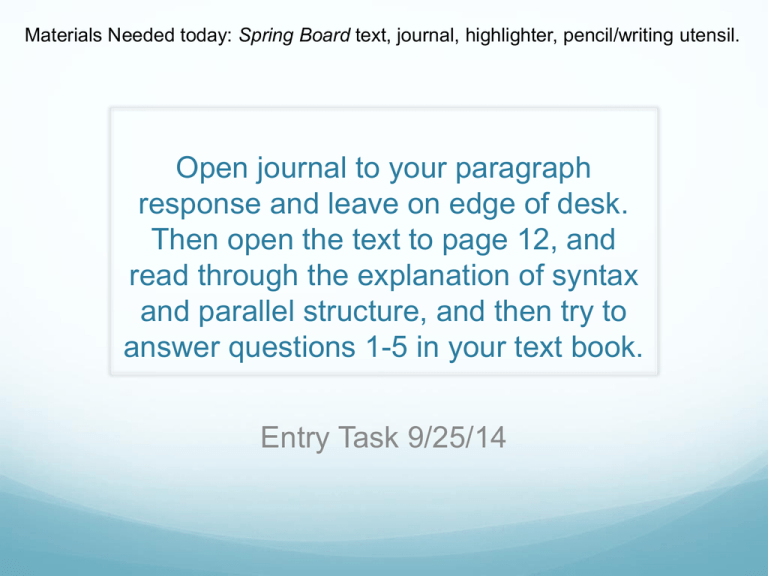
Materials Needed today: Spring Board text, journal, highlighter, pencil/writing utensil. Open journal to your paragraph response and leave on edge of desk. Then open the text to page 12, and read through the explanation of syntax and parallel structure, and then try to answer questions 1-5 in your text book. Entry Task 9/25/14 1.4: Language and Writer’s Craft What is parallel structure? Parallel Structure is a convention and a rhetorical device: a purposeful way to order ideas in language. Parallel structure is a part of syntax: a way of ordering language. 1.4: Language and Writer’s Craft How do I define it? Parallel Structure: the repetition, or pattern of phrases (or words) in the same grammatical form. Parallel Structure: the repetition, or pattern of phrases (or words) in the same grammatical form. Here is an old poet’s recipe for experiencing beautifully constructed language: “We must read aloud; we must listen. We must roll vowels on our tongues, chew on consonants; we must keep the beat with arm and leg.” ~ Donald Hall What are the repeating patterns? What are the repeating phrases? What is the repeating grammatical form? What is its purpose? Parallel structure is an ordering of language (a syntax) and has two main persuasive (rhetorical) purposes: •To demonstrate that two or more ideas have the same importance. (Impacting the intellect.) •To please the reader/listener’s ear and eye with repetition and balance. (Impacting the emotions/senses). Why do I need to know this? When you can create parallel structures in your own sentences, you can bring power and persuasiveness to your writing. When you can identify parallel structure in others’ writing you can analyze the IMPACT of specific kinds of writing on audiences Now rewrite the sentences on page 13 Rewrite them in the blank space below the 4 sentences. These sentences have incorrect parallel structure mostly due to verb forms and/or other grammatical parallelism. Now to begin “Marigolds” On page 15, there is a short story titled “Marigolds.” It is a coming of age story written by Eugenia Collier. While you read the story, I want you to highlight and annotate the diction, syntax (possibly parallel structure), and imagery that creates the narrator’s voice. All annotations should explain the inferences you can make about the quote in regards to voice, tone, character (personae), or significance of the event being described. It’s a longer story, so you have the rest of the class period to work on this, and then whatever you don’t finish is homework.
